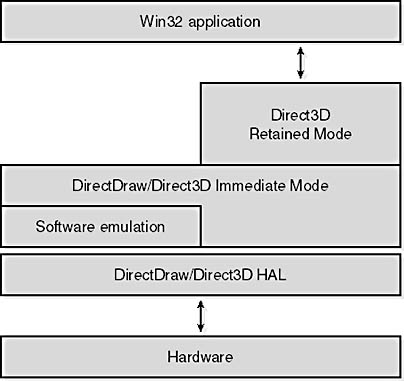How Direct3D Works as a DirectX API
Direct3D first appeared in DirectX 2.0, which came out in 1996. In the short time since its introduction, Direct3D has become the most popular 3D API on the market. Many games and simulations use it, and almost every 3D graphics accelerator produced supports it. The hardware accelerators now being developed can achieve multimillion-polygon-per-second performance on graphic cards that cost between $100 and $200. Until recently, this speed was possible only on hardware costing tens of thousands of dollars. These accelerators used in conjunction with Direct3D have dramatically increased the speed and drastically reduced the cost of 3D applications; no longer does high performance necessitate high cost.
Like all the DirectX APIs, Direct3D was designed not only to provide developers with a common API for game development that was extensible for the future but also to allow for complete backward compatibility. All games developed in early versions of DirectX are guaranteed to run in future versions of DirectX.
Direct3D applications work with graphics acceleration hardware similarly in both Retained Mode and Immediate Mode. As mentioned earlier, they use hardware through the HAL, if it's available—otherwise, they use the HEL. Because Direct3D is an interface to a DirectDraw object, Microsoft refers to this HAL as the DirectDraw/Direct3D HAL.
Figure 1-1 illustrates how Direct3D works with the Microsoft Win32 environment and the available hardware accelerators.

Figure 1-1 The relationship of Direct3D to the DirectX environment and to the system
EAN: 2147483647
Pages: 131